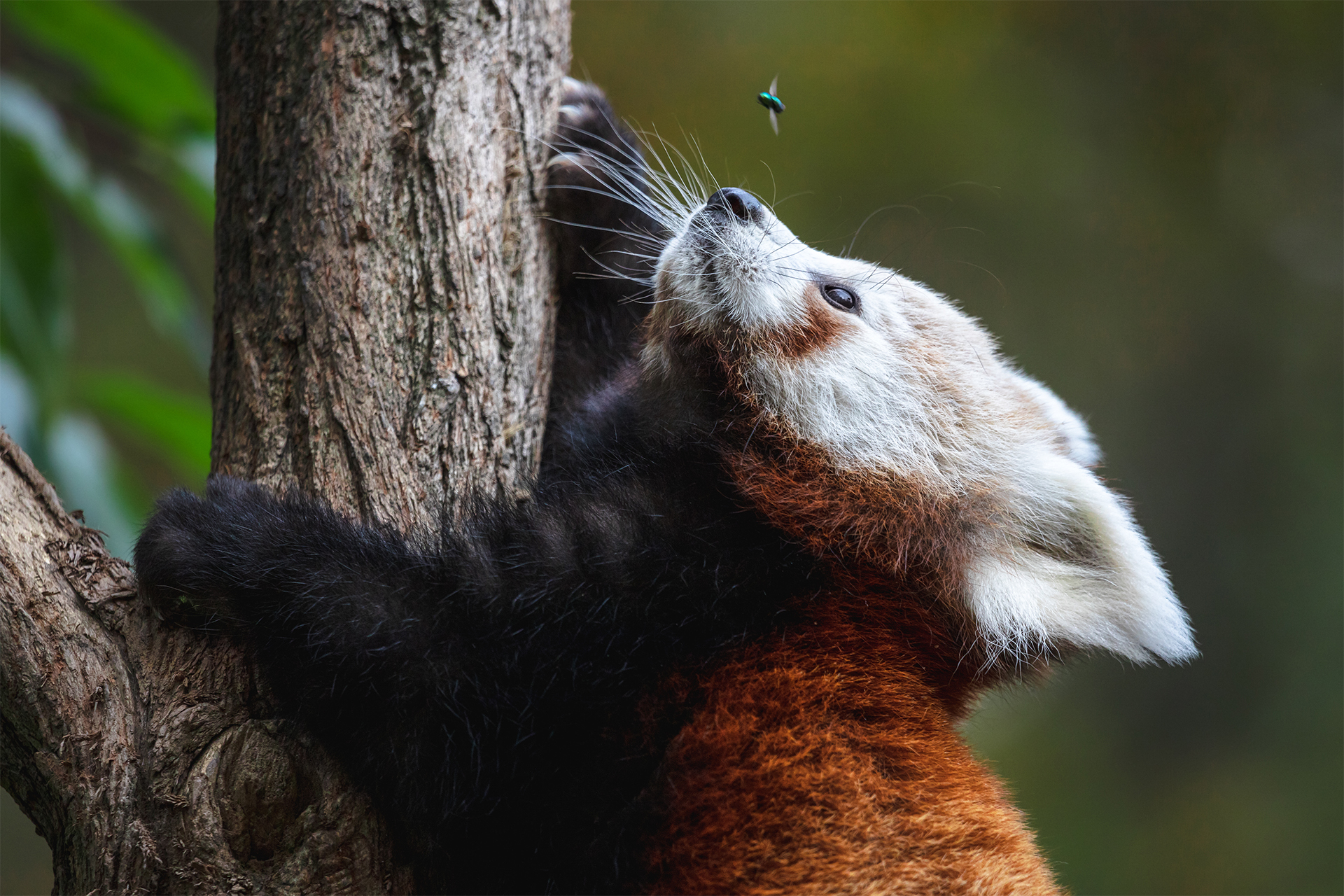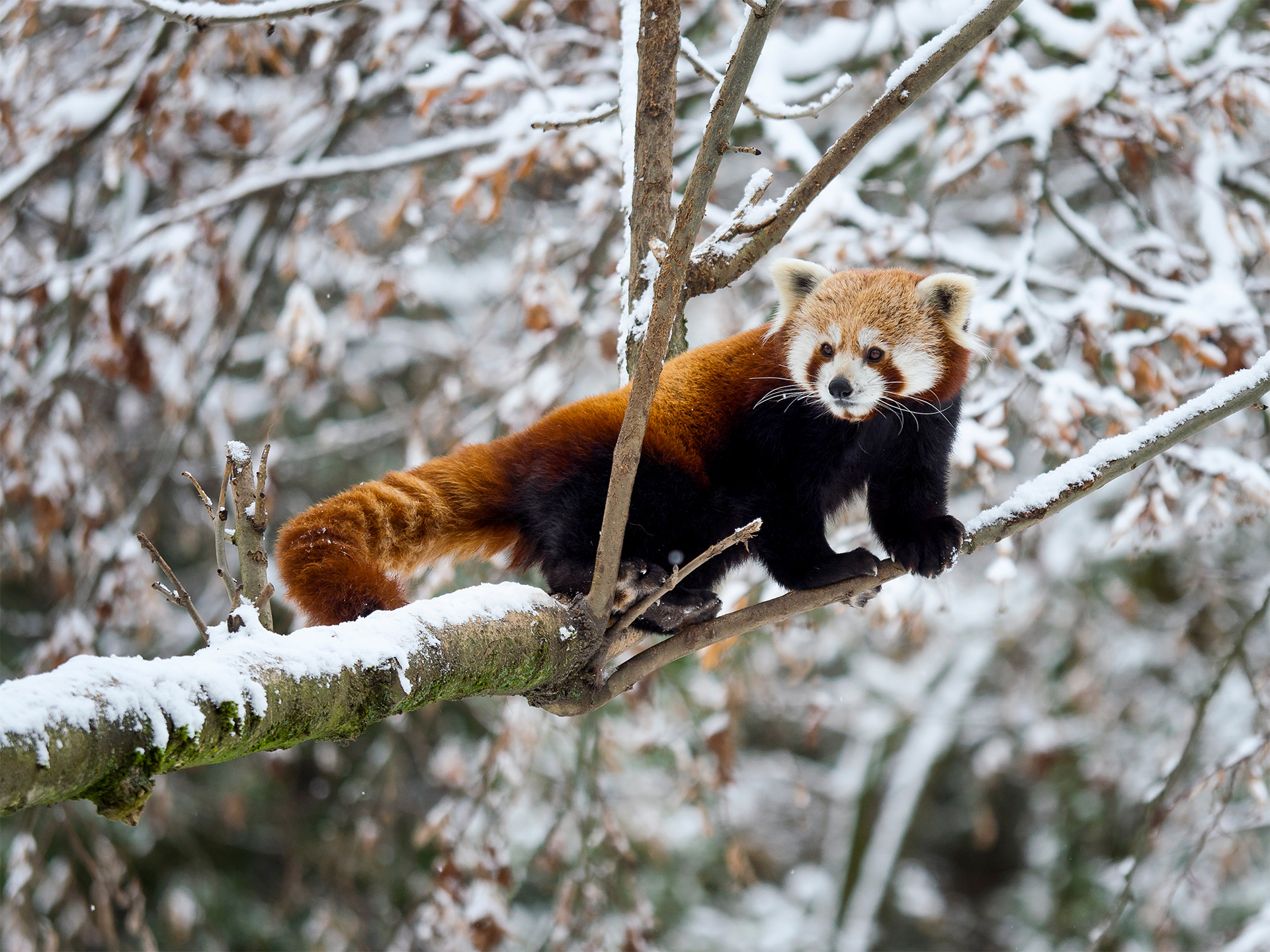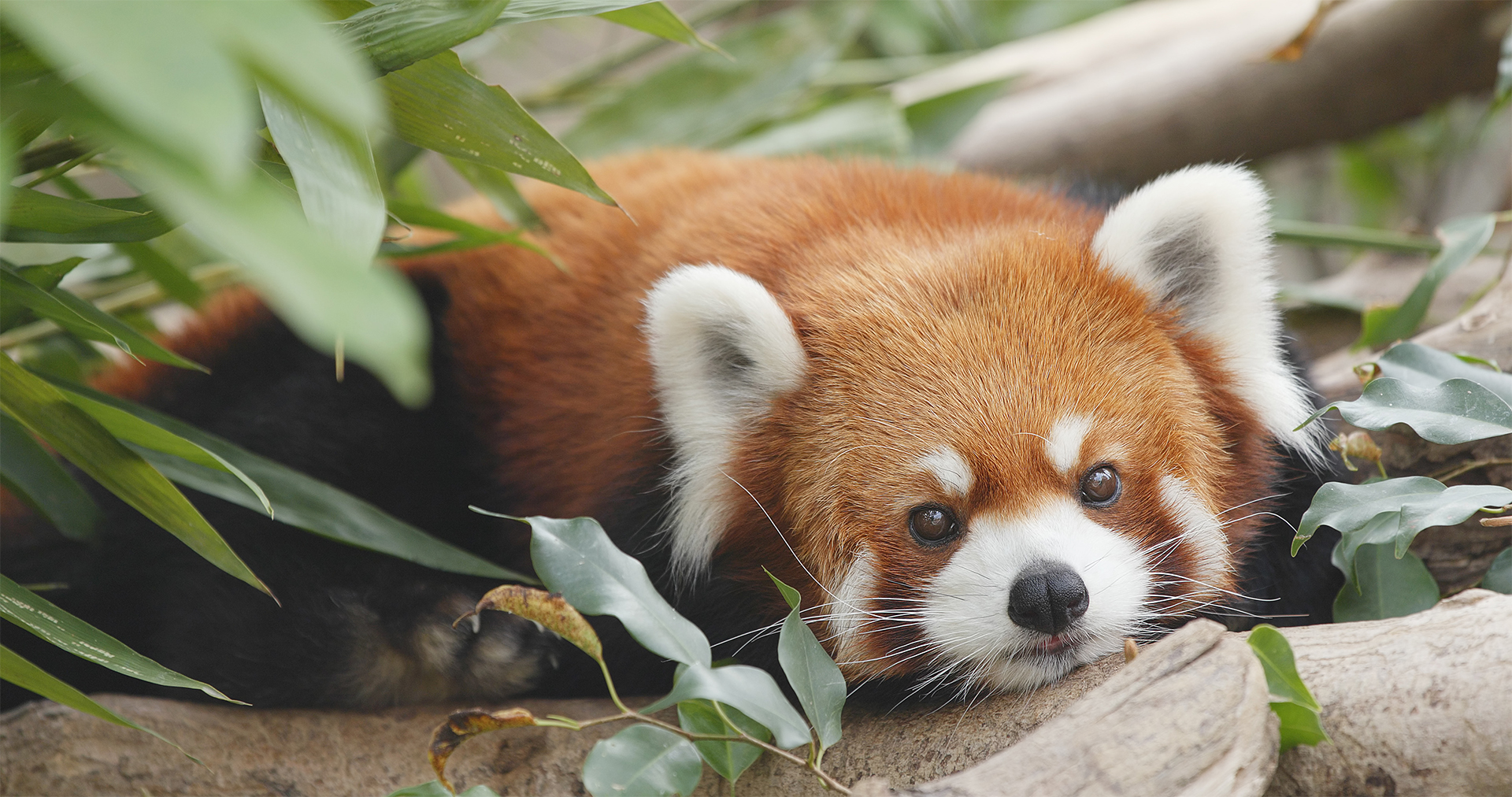Whether you’re a red panda fan because you’ve seen them at your local zoo, or because your tween has watched Disney’s “Turning Red” movie umpteen times, you don’t want to miss International Red Panda Day on September 16, 2023.
These addictively adorable creatures are as cute as can be, but did you know they’re also incredibly unique and endangered? Red pandas are the only species of their kind—and, sadly, there may be as few as 2,500 of them remaining in the wild.

Why should we celebrate the red panda? What’s being done to protect them? And where might you see one in the wild? (Hint: Our Wild Side of China trip gets you up close and personal with their sweet little faces!) Read on for some ridiculously cool red panda facts, then mark International Red Panda Day down on your calendar to celebrate every year on the third Saturday of September!
Six Reasons to Care About Red Pandas
1. They’re the OG Pandas
That’s right. The red panda is the original panda, discovered approximately 50 years before the giant panda. (Fun fact: They’re often referred to as “first panda,” “firefox,” “lesser panda” or, my personal favorite, “red cat-bear.”) The red pandas alive today represent the only species that remains in their taxonomic family (Ailuridae, for those who are keeping track).

In the past, the red panda was classified in the families Procyonidae (same as raccoons) and Ursidae (same as bears). But recent research has revealed that red pandas are, in fact, part of their own little family due to their special foraging patterns and Asiatic geographic distribution. That’s just more reason they’re vitally important to our planet’s natural history and biodiversity and why we need to preserve their population.
2. Red Pandas Are Ambassadors of the Forest
Found in the Eastern Himalayan broadleaf forests of Nepal, India, Bhutan, Myanmar and southern China, the distinctive red panda acts as a spokes-animal of sorts, educating the world about its important habitat and why it should be protected.
According to Nat Hab conservation partner World Wildlife Fund, “Human activities are taking a toll on local forests [in Sikkim, India]. And unless these forests are secured, red pandas may have an uncertain future in a changing climate.”

© Brad Josephs
At one time, the red panda roamed far and wide over the Chinese provinces of Guizhou, Qinghai, Gansu and Shanxi. Unfortunately, it has become extinct in these areas and today is found only in Yunnan, Sichuan and Tibet. Today, there are only an estimated 14,000 square miles of suitable habitat left in all of China for red pandas—that’s only slightly bigger than the state of Maryland.
Within their remaining landscape, red pandas inhabit temperate deciduous and coniferous forests between 5,000 and 13,000 feet above sea level. Originally carnivores, they’ve adapted to dining almost exclusively on the thick bamboo found within the forest’s understory. They eat up to 13 hours a day (!), ingesting about 30% of their body weight daily to maintain a healthy weight. When they’re not feasting, they love to hide out in the forest’s hollow trees and conserve their energy. They’re most active in the early morning and late afternoon, and you’ll likely see them on their own unless it’s breeding season.

3. There Are Actually Two Red Panda Subspecies
Despite making up their own taxonomic family, there are two subspecies of red panda: the Ailurus fulgens fulgens and the Ailurus fulgens styani. The fulgens fulgens was the very first red panda discovered and was named Ailurus after the Greek work ailouros, which means cat, and fulgens, which means fire-colored or shining. Today, they’re found in the East Nujiang River in Yunnan Province and the Hengduan Mountains in Sichuan Province and northern Myanmar. They’re also sometimes referred to as Himalayan red pandas.

Himalayan red panda (characterized by whiter fur on face)
The other subspecies, styani, was named for F.W. Styan (an English tea merchant who spent many years in China) and is found in in Eastern Arunachal Pradesh, Myanmar and parts of China. While both subspecies are about the size of your average house cat, the styani panda is larger and more brightly colored. They’re also sometimes referred to as Chinese red pandas.

Chinese red panda (characterized by more vibrant red fur and higher contrasted rings on tail)
All red pandas resemble raccoons (hence their original classification), with round heads with white badges, a pointed snout and erect ears. They’re recognizable by their long, bushy tails with a pattern of 12 alternating red and buff rings (similar to a lemur tail). And, as if they couldn’t get any cuter, the forelegs of a red panda are angled inward, so they have a funny waddling walk.
4. The Red Panda Is Endangered
The rare red panda has experienced a sharp decline in numbers—approximately 50% in 20 years.
The number one threat is habitat loss, which is why red pandas are often used as an ambassador for their homelands, helping clue folks in that unless we make some significant changes to our behavior, their habitat will be destroyed. Human population explosion in the Eastern Himalayas has led to deforestation and the degradation of red panda habitat, much of which has been fragmented by human-led projects, such as road construction, electric transmission lines and mining.

Livestock herding and the related logging it entails also negatively impact the red panda’s home. Herding practices include cutting down wood for shelter and firewood and allowing herds to roam in the forest where they inevitably eat and trample bamboo the red pandas depend on for sustenance. Herders’ free-roaming dogs (and the diseases they carry) are also a significant problem. Not only can they kill the red pandas, but they can spread seven different species of parasites to the red pandas, which are always fatal.
Unfortunately, the stories of gloom and doom continue. There is more poaching and illegal trade of the vulnerable red panda population than ever before (red panda fur caps and hats are often sold in Bhutan). And, as for that bamboo (which makes up 98% of the red panda’s diet), the plants are not thriving due to disturbed habitat and fragmented forest. Finally, as elsewhere on the planet, the Himalayan climate is changing, with more frequent droughts, more snowfall and increased chances of floods.
5. There’s Good News for Red Pandas, Too!
Thankfully, organizations such as World Wildlife Fund are working hard to save the red pandas. They’re making a difference in Nepal, where approximately 38% of all red panda habitat exists. Through community outreach, WWF teaches yak herders how to reduce their impact on the landscape, trains families to manufacture and install cookstoves for use instead of firewood, and creates tourism packages that support the local community.

WWF also continues to monitor the red panda population and habitat in India, Nepal and Bhutan so they can learn more about the species and what it needs to thrive. They’re currently looking into feasible ways to reintroduce red pandas into specific sites, including Sikkim, India, to create new populations.
What’s cuter than a red panda? A baby red panda! Recent red panda births have inspired hope for conservation efforts. At Paradise Wildlife Park, 20 miles north of London, endangered red panda mom Tilly gave birth to a cub just one month after the passing of her partner, Nam Pang, with whom she had been matched in an international breeding program. At the Potter Park Zoo in Lansing, Michigan, an eight-year-old red panda, Maliha, delivered her own precious cub in late July.
6. It’s Possible to Meet a Red Panda
Not only is it still possible to see a red panda in the wild, but your conservation-minded nature tour can aid in their population preservation by contributing to the local economy. Our expert-led Wild Side of China trip takes you deep into the Minshan Mountains of Sichuan to see some of the world’s most endangered wildlife, including the elusive red panda. These are regions supported by WWF, places where rare moon bears and golden snub-nosed monkeys are neighbors with giant pandas and Sichuan takins.

Our exclusive permits to the region afford the best possible opportunity to spot these animals in the wild—and, honestly, even knowing you’ve been in proximity to a giant panda is exhilarating. Red pandas may make themselves known as you explore the mist-shrouded limestone peaks and boulder-strewn gorges within the 100,000-acre Wild Panda Nature Reserve. Near Siguniangshan National Park, we hope to glimpse them in the high-altitude forests of the Yin-Yang Valley, Willow Bridge, Sun-Moon Mirror Mountain and Five-Colored Mountain of the Shuangqiao Valley, sitting at 10,000 feet above sea level, with the highest mountains nearly double that.
We also visit the Dujiangyan Panda Valley, a panda research and breeding base and center for conservation education. Here, pandas, including our favorite “red cat-bears,” are gradually habituated and returned to the wild. Watch them in transitional “dens” as they learn to live on their own in natural surroundings.

© Brad Josephs
Ready to celebrate these ruddy residents of the Himalayas? We hope you’re inspired to know more about red pandas and the challenges they face, and maybe even travel with us to their home, where you can’t help but grin at their little bamboo-eating, bushy-tailed bodies. Happy International Red Panda Day!


























